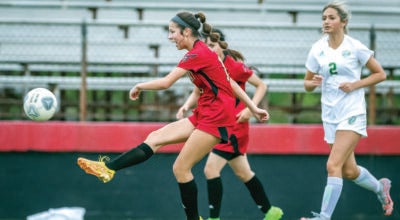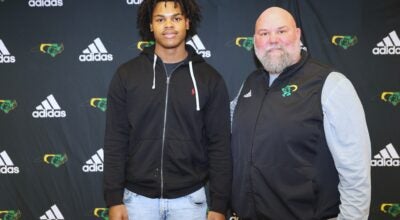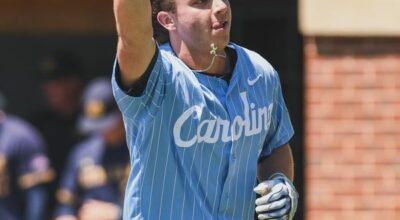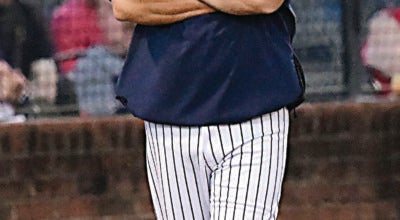NASCAR: Smith recalls 50 years of NASCAR
Published 12:00 am Monday, May 25, 2009
By Jenna Fryer
Associated Press
CONCORD ó It took Bruton Smith more than a year to build his first race track, a frustrating project filled with financing issues, weather delays and too many setbacks to count.
When the gates finally opened at Charlotte Motor Speedway, the fledgling track operator worked 48 hours straight to prepare for the June 19, 1960, inaugural race. Smith desperately needed the event to reach the halfway point ó the mark that made it an official race and ensured he wouldn’t have to issue any refunds ó and was eager to stage an exciting show.
At the critical 300-mile mark of the World 600, his job was done.
“Once we got past the halfway point, I went to sleep. I really did,” Smith said. “I slept the rest of the race on a stool because I felt such relief. We couldn’t afford to give the money back, and getting to that point had been such a drawn out effort to build this speedway. Trials and tribulations you would not believe.”
That was 50 years ago, when Smith simply wanted to introduce stock car racing to the public through an impressive 1.5-mile speedway.
He had no idea he had created a race that would grow into one of the crown jewels of the NASCAR schedule.
He celebrated the 50th anniversary of his first race Sunday, one of the biggest days in motorsports. The Indianapolis 500 and Formula One’s Monaco Grand Prix precede the race now known as the Coca-Cola 600 at the renamed Lowe’s Motor Speedway.
It’s the longest race on the schedule and after the grueling 600 miles in conditions that change dramatically from the daytime start to the nighttime finish four-plus hours later. The winner of Sunday night’s race will claim the lion’s share of the record $6.7 million purse and a 225-pound crystal and marble trophy that commemorates the 50 years of racing at LMS.
More important, though, is the title as Coca-Cola 600 winner.
“To me the Daytona 500, the Southern 500, the Coke 600 and the Brickyard 400 are the four big races,” veteran Jeff Burton said. “I like going back and looking at the old pictures. This is a really, really cool race track, a difficult race track and it keeps changing. The history of it is special. That to me makes it one of the crown jewels.”
A two-time Coca-Cola 600 winner, Burton treasures his 1999 victory over Bobby Labonte that many race fans didn’t have a chance to properly enjoy.
“It was an incredible race that TV did no justice to whatsoever,” Burton said. “They went away on break. We had a race off pit road and we passed each other like three times and they never showed it. It was a great race.”
Jeff Gordon earned the first of his 82 career victories in the 1994 running of the race, beating Rusty Wallace and shedding tears of joy in Victory Lane. On his first trip into North Carolina several years earlier, he made a detour after landing at the Charlotte airport to pass the track on his way to a driving school in Rockingham.
“I was blown away,” Gordon said. “I never even went inside. I just saw it from the outside and thought it was incredible. I couldn’t wait to drive a stock car and couldn’t wait to get to Lowe’s Motor Speedway.”
The track sits just minutes away from Hendrick Motorsports’ sprawling campus, and team owner Rick Hendrick has made winning at the home track a priority for his organization. When Gordon did it with pit strategy on the final stop ó he took two tires, race leader Wallace changed four ó it was a monumental victory for the driver who has since added four Cup titles to his resume.
“It was beyond a dream come true to win a race at the Cup level, and to do it at Charlotte,” Gordon said. “Everybody knows how special Charlotte is, just its history within the sport, but also because it’s located in the backyards of all the race teams. They all consider that their home and take a lot of pride in winning this particular race. Plus it’s a huge event.”
It took time to make it such a special race, but because of its unique length, every driver wanted a chance to be in contention at the end. Seven-time Cup champion Richard Petty only won it twice, when it took more than six hours to complete.
“It took all cotton pickin’ day,” Petty said. “It might not have been the biggest race, but it was the longest race and you wanted to have your name on that list. It used to be when we ran 600 miles, it was survival. Whoever could build a car and keep it out of the fence, keep the motor from blowing up and be there at the end of the race.”
Jack Smith thought it would be him in the inaugural 1960 race. He’s built an eight-lap lead when debris on the track punctured his fuel tank and NASCAR black-flagged him for spilling gasoline all over the track. His crew tied a cloth to a stick and shoved it in the hole, but the car still leaked gasoline.
Two times he tried to return to the track, and NASCAR called him back to pit road both times, the last time with roughly 15 laps to go in the event.
“Jack got out of his car and cried,” Bruton Smith said. “To see a guy, he was a kind of burly, rough-and-tumble guy, sitting there crying. I’ll always remember that.”





